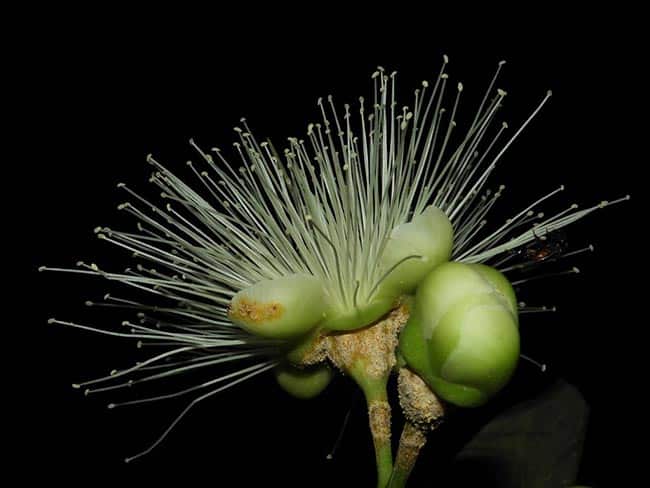Table of contents
有会跳舞的花吗? 今天你就会知道了!
跳舞的花是一个用来描述花的繁忙性质的术语。

大多数花的花瓣会随风或被触摸时移动,但有些花似乎即使没有任何外部刺激也会跳舞。
这些花很罕见,关于是什么让它们移动,目前还不太了解。

一些理论认为,这些花是为了吸引昆虫来帮助它们传播,而其他理论则声称,这些花是为了逃避试图吃掉它们的昆虫。
在任何情况下,跳舞的花朵都是大自然的一个迷人景象。
有一种花会跳舞吗?

没有特定的花会跳舞 但有些花的花瓣大而轻,风一吹,看起来就像在跳舞。
看起来像在跳舞的花

- 粉红色: 作为最浪漫的花之一,玫瑰是爱情和激情的象征。 它精致的花瓣和柔和的香水让人陶醉,而它优雅的动作使它看起来像在跳舞。
- 莉莉: 百合花是茂盛的,充满生命力的花朵。 它们的长茎和大花瓣使它们看起来总是在运动,随着微风的声音跳舞。
- 黛西: 雏菊是开朗而友好的花朵。 它们不断的运动和坦率的性格使它们似乎总是在跳舞,无论走到哪里都在传播快乐。
- 向阳花: 向日葵是希望和欢乐的象征。 它们巨大的黄色圆盘似乎在风声中旋转和跳舞,给所有看到它们的人带来微笑。
- 大丽花: 大丽花是奢侈而雄伟的花朵。 它们长长的茎和五颜六色的花瓣使它们似乎总是在运动,随着微风的声音跳舞。
- 兰花: 兰花是异国情调和诱人的花朵。 它们蜿蜒的动作和笼罩的香水使它们似乎总是在跳舞,吸引着所有看到它们的人。
- 莲花: 莲花是印度的一种圣花,它优雅的动作和宁静的美感使它仿佛一直在跳舞,引领人们进入一种宁静和安详的状态。
- 茉莉花: 茉莉花是中国最受欢迎的花卉之一。 它精致的香味和优雅的动作使它仿佛总是在跳舞,无论走到哪里都在传播快乐。
- 郁金香: 郁金香是欧洲最受欢迎的花卉之一。 它优雅的动作和多彩的美感使它看起来总是在跳舞,无论走到哪里都在传播快乐。
- 仙人掌: 仙人掌是一种独特的异国植物。 它缓慢的运动和多刺的外观使它看起来好像一直在跳舞,无论走到哪里都在传播快乐。
关于花卉运动的科学研究
- 加速开花: 这项研究表明,花朵在温暖的环境中时,移动速度更快。
- 明亮环境中的花卉运动: 另一项研究表明,花朵倾向于向光线方向移动。
- 花朵对触摸的反应是运动: 一项研究发现,花朵会远离触摸它们的物体,这表明它们可能把触摸作为一种危险信号。
- 花朵对声音的反应是运动: 第四项研究表明,花卉会向响亮、高音调的声音移动,这表明它们可能将声音作为一种危险信号。
- 花卉运动对温度的反应: 第五项研究发现,花朵会远离热量,这表明它们可能将温度作为一种危险信号。
1.什么是跳舞的花?
会跳舞的花是随风或其他能量来源移动的植物。 一些植物种类,如 小麦、大米和玉米 其他植物,如花,利用运动来吸引昆虫授粉。
See_also: 金合欢花:特点、含义、种植和烹饪食谱为什么跳舞的花很重要?
跳舞的花很重要,因为它们有助于植物的授粉。 当昆虫到花中觅食时,它们会带走植物的花粉,这些花粉沉积在植物的雌性结构上,使植物能够产生种子和果实。
巴西花卉的名称和图片:巴西的流行和稀有花卉3.跳舞的花朵是如何运动的?
随风或其他能量来源起舞的花朵。 一些植物种类,如小麦、水稻和玉米,其叶子随风弯曲,以减少暴露在风的力量下的面积,从而避免损害。 其他植物,如花朵,利用运动来吸引昆虫授粉。
See_also: 如何种植太阳花(Sunpatiens hidrida)+护理4.会跳舞的花有哪些种类?
一些会跳舞的花种包括雏菊、向日葵、马齿苋和莴苣。
5.我在哪里可以看到会跳舞的花?
你可以在世界各地的许多地方看到跳舞的花朵,在植物园、公园,甚至在你的后院。
